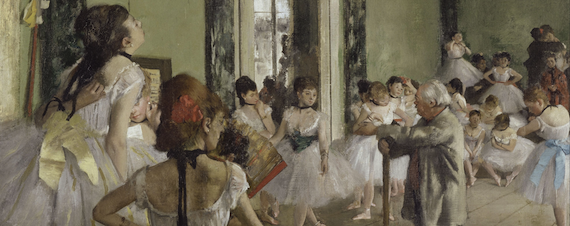 |
| Emily Dickinson, 1846/1847 |
poetry was absolutely unknown during her lifetime. The lifestyle of Emily Dickinson is what actually drew me first toward her. Before discovering her work, I obviously associated her name with the only certified known picture of her appearance. The photograph of this white, hollow-cheeked teenage girl of 16, who seems so fragile and delicate, hit firstly my vision, and secondly my mind. It is absolutely impossible to lay eyes on this face without being haunted by it. As a matter of fact, "haunting" could qualify perfectly how the neighbourhood of Emily Dickinson perceived her. She was known by her neighbours (when they could rarely catch a glimpse of her on the outside) for only wearing white clothing. The fact that she was a perfect recluse and that curious eyes associated her with the color "white" turned her whole persona into some kind of ghostly appearance (or "A Myth", as some citizens from Amherst named her). Most of the friendships and loves that Dickinson experienced were only nourished by a very dense correspondence between her and her acquaintances.
I first discovered Emily Dickinson by reading one of her most famous poem: "I felt a funeral, in my brain," (340), a few years ago. And unfortunately, I did not have the spare time to study some more of her works during my first years of University. I then decided that 2016 would be the year where I would endeavour to learn more about her life and try and study some of her poems. I was offered her "Selected Poems" for Valentine's Day, and I literally read the content of the book within a night. The book is segmented in three parts: "The Poet's Art", "The Works of Love" and "Death & Resurrection". Although not all of her poems are present in the book, it allowed me to discover the different themes cherished by Dickinson (Love, Nature, Death, Religion) and her writing, which reminded me in so many ways of some of the Metaphysical Poets like John Donne or George Herbert.
The first poem that made my heart throb was "All overgrown by cunning moss," (146):
All overgrown by cunning moss,
All interspersed with weed,
The little cage of "Currer Bell"
In quiet "Haworth" laid.
This Bird - observing others
When frosts too sharp became
Retire to other latitudes -
Quietly did the same -
But differed in returning -
Since Yorkshire hills are green -
Yet not in all the nests I meet -
Can Nightingale be seen -
As a fanatic of Charlotte Brontë, and as an avid visitor of Haworth, this poem made my heart sink. It was obviously written to honour the death of one of the great Brontë Sisters (at least my favorite), by using her pen name "Currer Bell", and by using the metaphor of a bird (or a "Nightingale") which cannot "be seen anymore" to represent Charlotte's death. Knowing the life of Charlotte Brontë, who never really left the Parsonage of Haworth, I love the fact that Dickinson used the metaphor of "The Little Cage" to represent Charlotte's grave, which is just in front of the Brontës' residence (which was also "a little cage" in its own way, as two of the sisters, Emily and Charlotte, died in the Parsonage). The presence of "moss" and "weed" on Charlotte's grave is such a powerful picture, and truthful as well! As anyone who visited Haworth Churchyard would know it: most of the graves are covered by vegetation and dead weeds. I found myself imagining Emily Dickinson reading "Jane Eyre" in her bedroom (one of my favorite books), and supposed that Charlotte Brontë must have had such an impact on her life for her to pay her homage with this wonderful poem.
The second and last poem that I will quickly comment upon is probably one of the most known by Emily Dickinson, "I heard a Fly buzz - when I died -" (591):
I heard a Fly buzz - when I died-
The Stillness in the Room
Was like the Stillness in the Air -
Between the Heaves of Storm -
The Eyes around - had wrung them dry -
And Breaths were gathering firm
For the last Onset - when the King
Be witnessed - in the Room -
I willed my Keepsakes - Signed away
What portion of me be
Assignable - and then it was
There interposed a Fly -
With Blue - uncertain - stumbling Buzz -
Between the light - and me -
And then the Windows failed - and then
I could not see to see -
The speaker of this poem is laying on her deathbed (or speaking from beyond the grave). And although she is living the last important moment of her life (the process of death), surrounded by loving people and ready to leave her possessions, she is distracted by the most trivial of things: a fly. The poem concentrates on the "rituals" which surround death. The dying speaker is getting spiritually ready to enter the "afterlife" and be welcomed by God. The Fly, which comes to disturb the religious cogitation of the speaker, ultimately becomes the representation of Death in an organic and scientific way (the body of the speaker will rot; thinking about the decomposition of her body after her death turns the speaker's strong faith into doubts in regards to the afterlife. Although, supposing that the speaker passed away, the fact that she can still discuss her death experience means that the afterlife is real).
One aspect I admired about the few poems of Emily Dickinson that I read is that although the themes of Love, Death and Nature are mixed, she always finds a way to interlink them, and makes the reader realise that the strong feelings felt toward those different subjects are as important as each other (at least for Dickinson, whose passion can be read between her lines).
